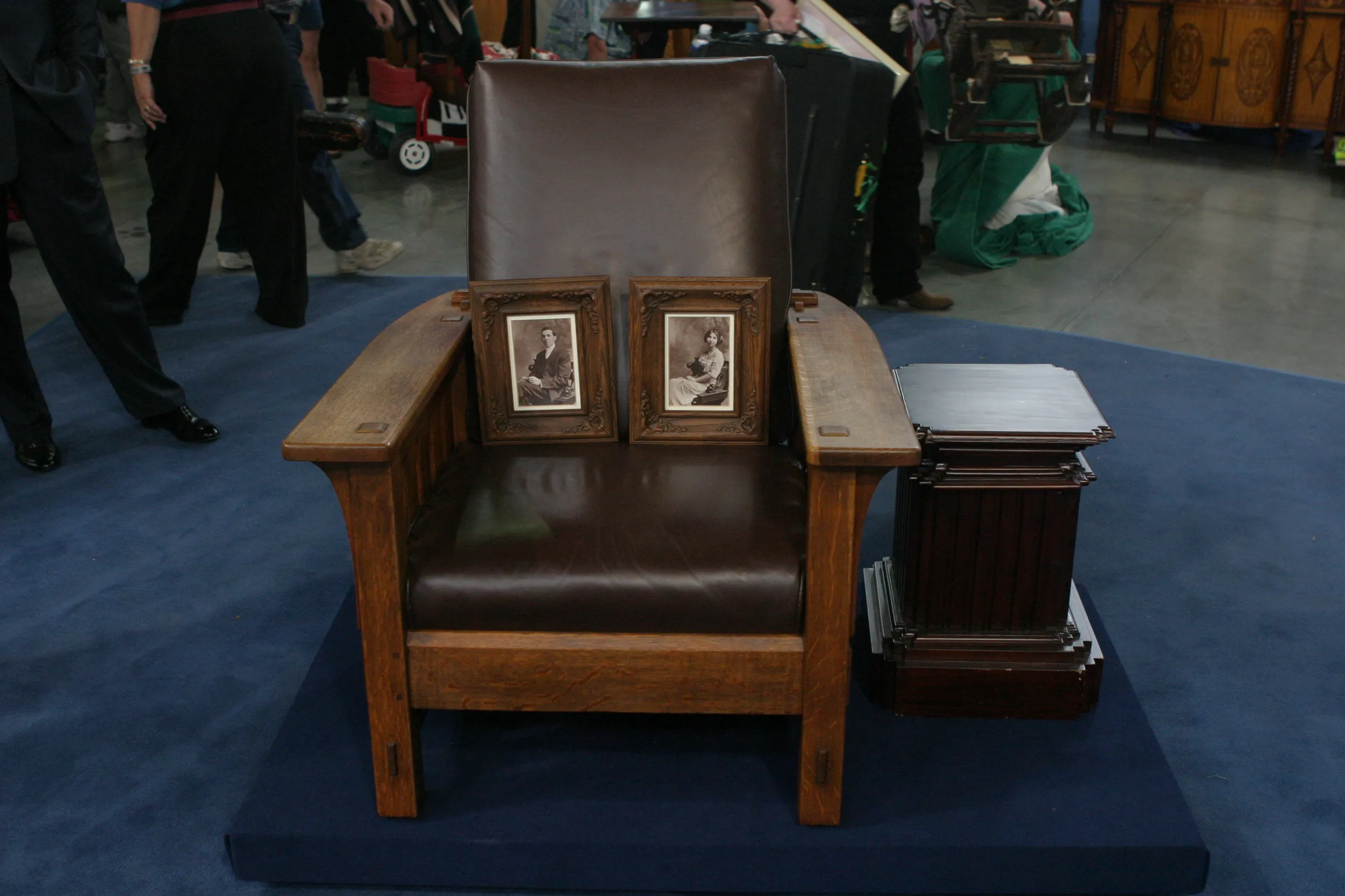APPRAISER: I love Chippendale pieces, but I also love Chippendale pieces that have a history, and this has been in your family quite a long time.
GUEST: We can trace it back at least to the 1860s, maybe the 1840s.
APPRAISER: Now, you brought this letter.
GUEST: Yes.
APPRAISER: Now, what is it?
GUEST: It was a letter written by one of my wife's ancestors during the Civil War.
APPRAISER: William S. Harris, I see it here.
GUEST: Right.
APPRAISER: Written to his father and mother.
GUEST: In New England.
APPRAISER: Yep.
GUEST: He was a Union soldier in Louisiana, and then, in 1908, the mother of the soldier gave it to the two children of the soldier.
APPRAISER: Okay.
GUEST: Saying "to be kept in grandfather's desk."
APPRAISER: Today we have computers, and we have passwords to get in.
GUEST: Sure.
APPRAISER: And unfortunately, letter-writing has become almost a lost art. In the 18th century, desks like this, they were a symbol that a family was literate, was worldly, was sending out these letters. Instead of a password, you had a key.
GUEST: Yes.
APPRAISER: Unlock it, open it up, you pull these lopers out or else...
GUEST: The loper-- it's called a loper?
APPRAISER: That's called a loper, these little guys here that slide in and out-- they support the lid. And inside, all these little cubby holes are here, this wonderful carved fan. These are document drawers. I love this. "November 1885, this is to certify that when I have done with this desk," which means, I think, when he's done with his life, right?
GUEST: Yes, but he doesn't say that.
APPRAISER: A polite way. "It is to go to William S. Harris." Of course, William S. Harris was the grandson, the boy who wrote from the war, right?
GUEST: Right.
APPRAISER: Isn't that neat? And I love to see that sense of history. Well, this desk here, if we look at this lovely interior again with the valances, the pigeon holes, the fan, and then go down the front. This has beautiful patina, nice color, which we love to see.
GUEST: As far as I know, nothing's ever been done to it.
APPRAISER: And you've never cleaned it, right?
GUEST: Waxed it occasionally.
APPRAISER: That's okay, that's just fine. It just has this nice color. These Birmingham brasses, made in England for the American market, they're original. I checked on the inside, no other holes there. You come down to this base, and this little double scroll, here, with the diamond in the middle...
GUEST: Uh-huh.
APPRAISER: As well as these very vividly shaped feet-- you see how they're extra... There's a little notch here-- they're over the top, they have lots of scallops and scrolls, typical of the 1760s and 1770s. Where do you think it's made?
GUEST: Well, we think New England. The family was from New England.
APPRAISER: Okay, probably made in Salem-- Salem, Massachusetts.
GUEST: Family was from Salem.
APPRAISER: No kidding, really? Right. Well, that's-- there you go. It's a wonderful Salem piece, the original feet, the color inside and down here is all really good. When we judge a piece of furniture condition-wise, we look at what could have happened to it, and on these desks, they'd open these up, they'd forget to pull the lopers, and what would happen? That would drop off, yup.
GUEST: Okay.
APPRAISER: This has only got a little crack down here, but it's the original lid, and that's really important, that can affect the value by 85%. So it's the original lid, so you add that up. Original brasses, great finish, and you've got this nice family history, and all that together really makes it a pristine object. Any idea of value? Have you gotten it appraised?
GUEST: We had it appraised about 30 years ago.
APPRAISER: Okay, what did they put?
GUEST: They priced it at $3,000.
APPRAISER: $3,000. Okay, 30 years ago, which is about right. Today, I'd put this desk at, easily, about $16,000...
GUEST: Okay.
APPRAISER: Even $16,500.












